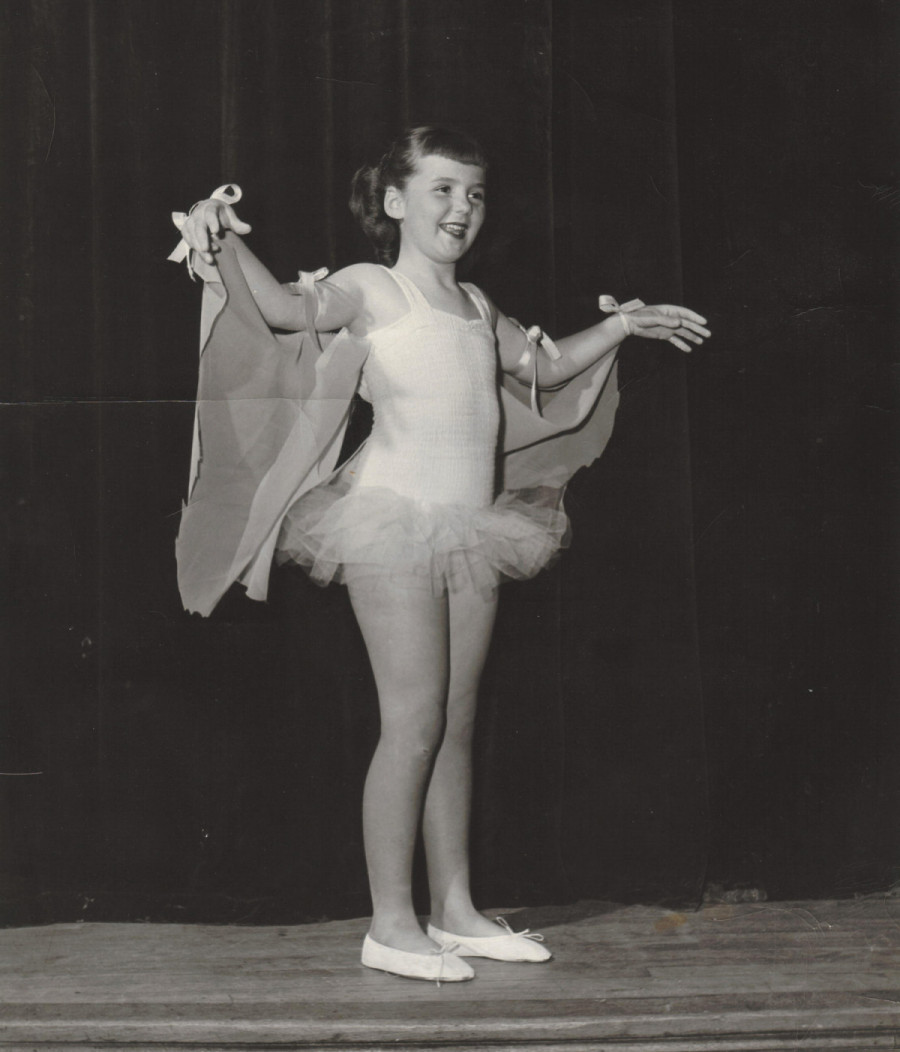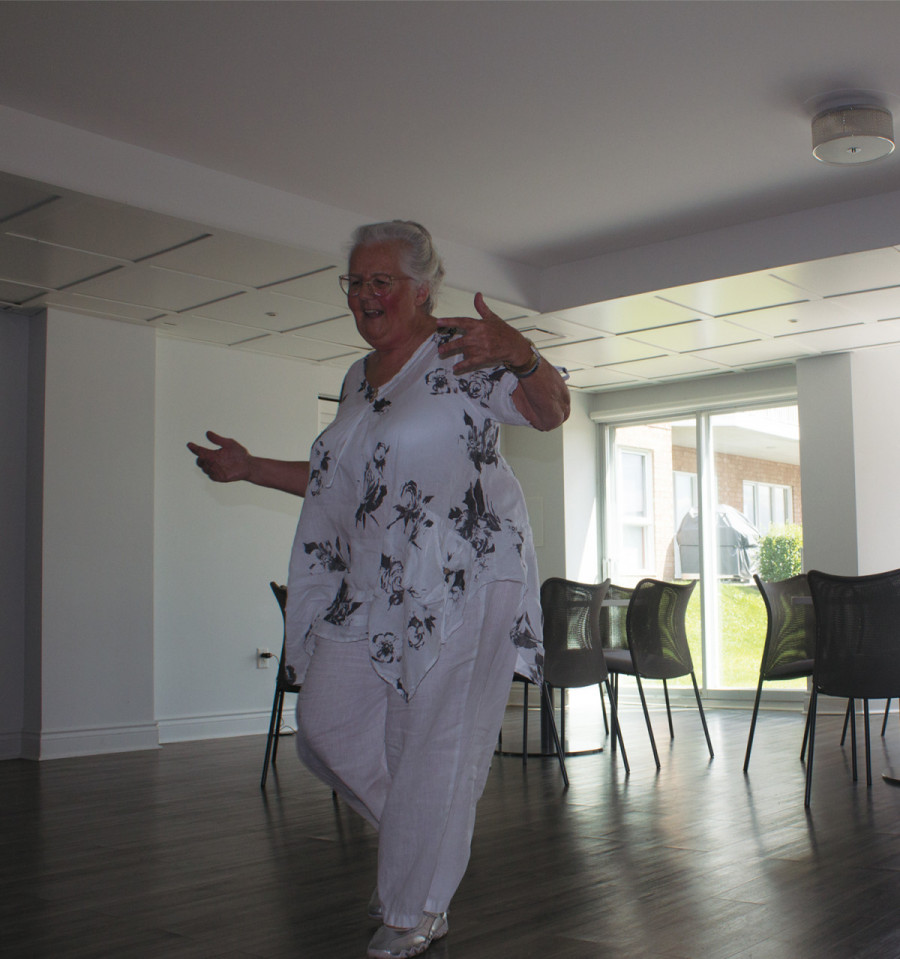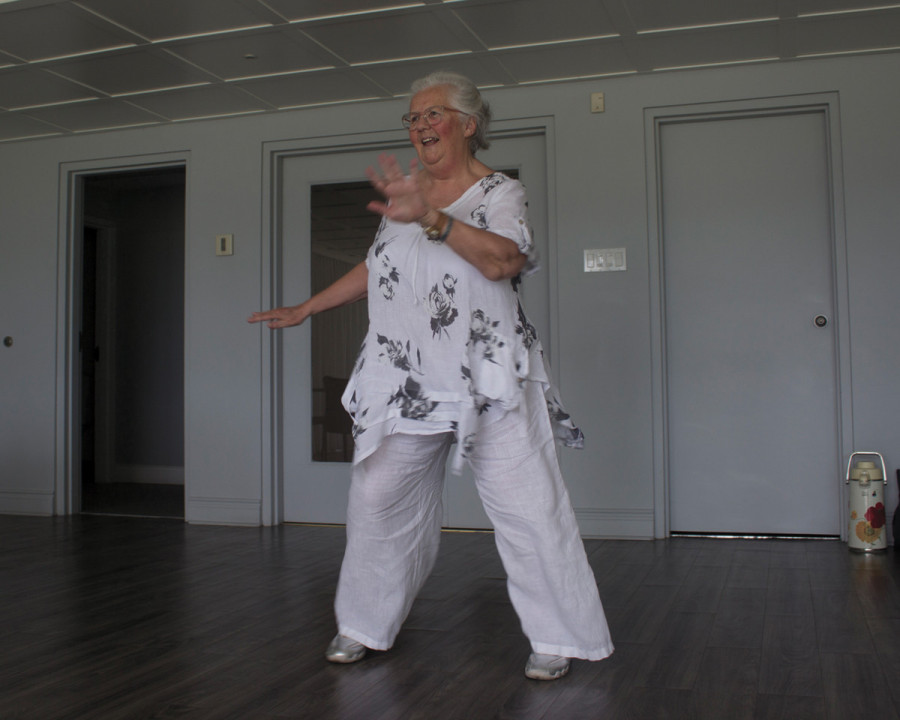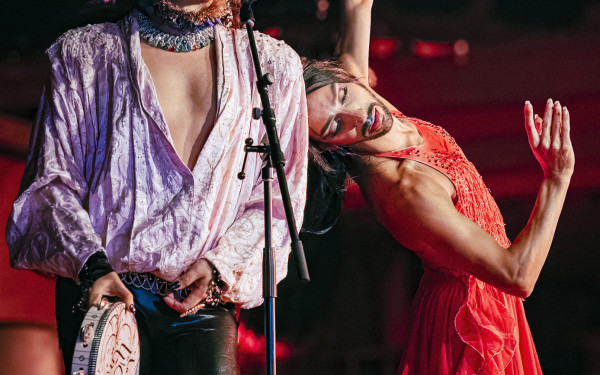Lesley Charters Cotton and Street Dancing: A Story of Alchemy
71-Year-Old Street Dancer Lives and Shares Her Passion Every Day
“I trained to be a secretary and I learned to type with a fellow student at the back of the room. We were not into it, and she would bring straight vodka to class. And we would giggle, we would type and we would giggle, and somehow it got us through this nonsense of secretarial [studies]. We couldn’t imagine ourselves as secretaries.” Lesley Charters Cotton didn’t stay a secretary for very long.
The 71-year-old Montreal street dancer leads an exciting life. She’s traveled, studied, followed her passions, and often circled back to being a teacher. Charters Cotton bridges people and disciplines.
When she was 31, she taught a photo print making class at Concordia’s Loyola campus, and she’s been a teacher of Chinese medicine for decades.
For parts of the 70s she worked for an airline in Alberta, selling tickets, handling luggage, communicating with head office. After, she worked in an architect’s office as a secretary.
“They asked me to do the bookkeeping and I’m sure that’s probably why they ran out of business because I wasn’t very good at that,” she said.
“But that was a thrill because I worked with some now internationally famous architects, so I now think back to the days when they used to hang out by the front desk and they would chat.”
Charters Cotton wasn’t dancing then. She was 12 when she got sick—with paralyzing migraines, body pain, loss of sensation in her extremities—and until doctors diagnosed her properly and cured her at 50, she couldn’t partake in dance, the medium that allows her to express who she is.

“And then I was able to dance,” said Charters Cotton. “And that’s what I’ve been doing ever since. And I thought I would maybe get it out of my system, that it would last maybe three or four years.”
But Charters Cotton never let go of the love she found: street dancing. She is prominently a house dancer, but has tried a lot of styles over the years.
“If I were a two-dimensional artist,” she said, “I’d be collage. It’s multi-layering, but it’s also multi-textural, so that the mood can change as it does with the music.”
Charters Cotton knows everyone in the Montreal street dancing community and they all know her. She has danced with every instructor, attended every event. She goes to dance battles and street dancing events around the city, danced in every studio.
“It’s been almost 20 years since I have been doing this seriously,” she said. “And when I say seriously, it means making an effort to grow with it and at the same time really not necessarily having a goal.”
“It’s very interesting when you get in your sixties, and now I’m in my seventies, this sense of ambition changes.”
Over the last two decades, through dancing, Charters Cotton looked into herself and explored her limits. That introspection, that inner voyage that dancing still grants her, and a sense of instant satisfaction from putting in the effort keeps her hooked.
Many days, she said, she still feels like she is beginning. Her sense of ambition is steered towards the present tense. Dance remains fresh. Charters Cotton said she grows through that exploration.
“Because I’m attracted to street dance, I think there’s chaos in me that gets explored,” she said.
“And that’s good news and bad news all at the same time. I think that we all live with a kind of personal chaos that needs to be ordered, that needs to be categorized, and the street dancing allows me to indulge so much into the inner chaos.”
Around 1996, Charters Cotton joined Dale King’s dance studio Soul Impact. It was two years before Charters Cotton got healed. She headed into a cardio funk class, a style now known as zumba, taught by King.
“It triggered a migraine that lasted for two years,” said Charters Cotton. “It was such a magnificent experience for me. I thought, ‘Maybe this pain is going to kill me but I’m gonna do this.’ It was like a breakthrough in the sense that I became so determined.”
“I think that we all live with a kind of personal chaos that needs to be ordered, that needs to be categorized, and the street dancing allows me to indulge so much into the inner chaos.” — Lesley Charters Cotton
It became a preoccupation—the desire to dance wouldn’t go away. She said she was going to dance nevertheless.
In some ways Charters Cotton’s life was shaped by the pain she was living with, leading her to study yoga, which gently initiated her to Chinese medicine.
She recounted teaching the fire element, which governs the heart, “and that’s about the aspect of joy in our life.”
“And I started to cry. And you know sometimes when you cry,” she said, “you just sob and you don’t know what it’s about, but you know that it’s in a deep, deep place you’re in, and you know that you’ve been moved.”
Later, when she was alone, she wondered about what happened.
The answer was dance.
Despite the pain, she was compelled to stick with the classes. King’s influence, her teaching skills, the music playing during the classes, the energy in the room—Charters Cotton wanted more of that in her life.
“So she’s just taken off, she’s just run,” King said. “And it’s something to see, it’s really something to see that you can always have your dreams and never be afraid to follow them.”
Charters Cotton has danced with everyone, but what she hadn’t done until last June was a solo performance. She choreographed a routine that she performed at the event So You Think That Was Dance at the Fringe Festival.
She recalled that stepping onto the stage, she did not experience stage fright or freeze. Rather, it was just a continuation of a process that had been ongoing for months. She had been rehearsing nearly every day in preparation for the show.
“There were moments [during rehearsal] when I was alone with the music and I just realized that I was transcending something,” she said. “This was good and bad. I wasn’t sure how it was going to come across. And I was bound and determined that no one was going to see me do it until the day of the show.”
She went to a few experts for upper body consultations and advice on how to include certain movements.
The dance was five minutes long, and when it was over, Charters Cotton realized she had blanked on the choreography during the middle of the performance.
“That’s been very instructive because I realized that I was trying too hard, I was too engaged, and that’s what created that,” she said. “But I was very impressed with how I recovered. It’s more than just the solo, it’s things like that where I’m thinking, ‘Wow, I’m good.’”
“The canoe is tipping and we didn’t end up wet. I balanced out. I just did a couple of turns and then I went right back into the dance exactly in the right place where I was supposed to be.”
Charters Cotton said that in most classes, she is the only dancer over the age of 30. “At the beginning it was weird for me and for them,” she said. “Now it’s only weird for them.”
“I’m the age of their grandparents,” she said, “and they wouldn’t dream of their grandparents indulging in this kind of behaviour.”
That is, until they see her dancing. Then they become friends. Charters Cotton expressed that it is “healing beyond belief.” That close friends were once strangers, and there is no distinction when they dance together.

King said that in the hundreds of people she has met and taught, very few clients become friends. She can count those on her two hands. Over the years, they became close, and Charters Cotton still attends some of her classes today.
“She believed in me more than I believed in myself sometimes,” said King. “And that I will always, always cherish […] and I humble to that.”
King described a moving gift she received from Charters Cotton in the early years after they first met—a picture of 9-year-old Charters Cotton in a little ballet outfit, on stage. “This is what I’ve always wanted to be,” King recounted Charters Cotton telling her. “And you’ve given me the opportunity to explore it.”
“She has a true sense of tranquility,” continued King.
Charters Cotton got married to her brother’s friend in 1969. “She never tried to change him, he never tried to change her. He knew who he was marrying, and accepted every part of her. It’s amazing,” said King.
In 1967, Meredith Cotton and Charters Cotton met for the first time. From Alberta, he was en route to Europe and stopped in Montreal. They visited the Expo 67.
“He was on his way to Europe, and this was the end of the 60s, and he had quit his job, and was going to find himself—he was a real hippie. He didn’t know how long he was going for, and I thought I’d never see him again.”
The next year, when Charters Cotton’s brother got married, her and her husband-to-be were the only ones in the wedding party that weren’t attached, “so that was kind of magic that happened.”
“He took me buffalo [sighting] in Alberta. That was it. We fell in love,” said Charters Cotton.
Cotton has a PhD in chemistry, and is now a writer. “Their life is arts and science,” said King.
Fast-forward to the end of the 90s, at Soul Impact, Charters Cotton was on a path of noticing. What else was going on behind those doors? She started taking classes with Marvin Baptiste, who was teaching clubbing, now called house dancing. It snowballed. “Seven days a week wasn’t enough,” said Charters Cotton.
“You can tell she loves dance,” said Baptiste. “She’s just a ball of energy, of positive energy […] she’ll make you feel better.”
Baptiste said Charters Cotton shows up for the community. She supports dancers, events; she connects people.
Over the past year, Charters Cotton started teaching at the YMCA residence, that supports refugees and asylum seekers.
“For one hour a week, we just dance,” she said, “and I try to make it fun and at the same time challenging. So I present a choreography that needs to be accomplished.”
Charters Cotton expressed that she sees herself as a “liaison person,” having in her skillset the ability to see strengths and build connections between things, cross-pollinate disciplines.
“It’s 2019,” she said. “We’re connected through social media. We don’t have to be so alone. There are those bridges that exist that we’re not even noticing, let alone go over. Like what we’re doing today, we need to use each other a little bit more.”


_600_832_s.png)




2_600_375_90_s_c1.jpg)